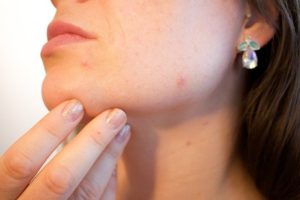 Do you ever get stress blisters? You know, those painful little sores that crop up on your hands or feet when under a lot of pressure? If so, you’re not alone. Stress blisters are a common side effect of stress and can be annoying and uncomfortable. In this post, we’ll talk about what causes stress blisters, how to prevent them, and how to treat them if they do occur. We’ll also share some tips for managing stressful situations to reduce the risk of developing stress blisters. So read on to learn more!
Do you ever get stress blisters? You know, those painful little sores that crop up on your hands or feet when under a lot of pressure? If so, you’re not alone. Stress blisters are a common side effect of stress and can be annoying and uncomfortable. In this post, we’ll talk about what causes stress blisters, how to prevent them, and how to treat them if they do occur. We’ll also share some tips for managing stressful situations to reduce the risk of developing stress blisters. So read on to learn more!
Table of Contents
What are stress blisters, and what causes them?
Stress blisters are small blisters that form on the skin due to friction or excessive pressure. They are commonly found on the hands, feet, and lips and can be painful and uncomfortable. Although they are not severe, stress blisters can be a nuisance and may require treatment to heal properly.
Several factors can contribute to the development of stress blisters, including:
- Wet conditions – When the skin is moist, it is more likely to develop blisters, and this is because moisture makes the skin softer and more vulnerable to damage.
- Friction – Repeated rubbing or chafing of the skin can damage the surface, leading to blisters.
- Pressure – Prolonged pressure on the skin can also cause blisters to form. This is often seen in people wearing ill-fitting shoes or spending long periods standing or walking.
- Stress – Physical and emotional stress can also contribute to stress blisters. This is because stress weakens the immune system, making the body more susceptible to skin damage.
If you think you may have a stress blister, it is vital to seek medical attention. Your doctor will be able to confirm the diagnosis and provide treatment to help speed up the healing process.
How to prevent stress blisters
There are several things you can do to prevent the development of stress blisters, including:
- Wear comfortable shoes – Make sure your shoes fit correctly and do not rub or chafe your feet.
- Protect your hands – When doing activities that pressure your hands, such as gardening or cooking, wear gloves to protect your skin.
- Take breaks – If you are standing or walking for long periods, take a break every few minutes to relieve pressure on your feet and legs.
- Manage stress – Practice stress-relieving activities such as yoga or meditation. This will help to strengthen your immune system and reduce your risk of developing stress blisters.
How to treat stress blisters
If you do develop a stress blister, there are several things you can do to treat it, including:
- Clean the blister – Gently clean the area with soap and water.
- Apply a bandage – This will help protect the blister and prevent it from popping.
- Take over-the-counter medication – If the blister is painful, take ibuprofen or another over-the-counter pain reliever.
- Seek medical attention – If the blister is large or overly painful, see your doctor for treatment. They may prescribe a course of oral antibiotics to help speed up the healing process.
Tips for managing stress
There are many things you can do to manage stress and reduce your risk of developing stress blisters, including:
Exercise regularly – This will help reduce stress levels and improve your overall health.
Eat a healthy diet – A nutritious diet will help to keep your immune system strong and reduce your risk of developing stress blisters.
Get enough sleep – Sleep is essential for good health and can help to reduce stress levels.
Practice relaxation techniques – This can include yoga, meditation, or deep breathing exercises.
Talk to someone – If you are feeling overwhelmed by stress, talk to a friend, family member, or therapist. This can help you to cope healthily.
Conclusion
If you are prone to developing stress blisters, it is crucial to take steps to prevent them. However, if you do develop a blister, there are many things you can do to treat it and speed up the healing process. With proper care, most blisters will heal within a few days. If you have any concerns about your blister, see your doctor for further evaluation and treatment.
